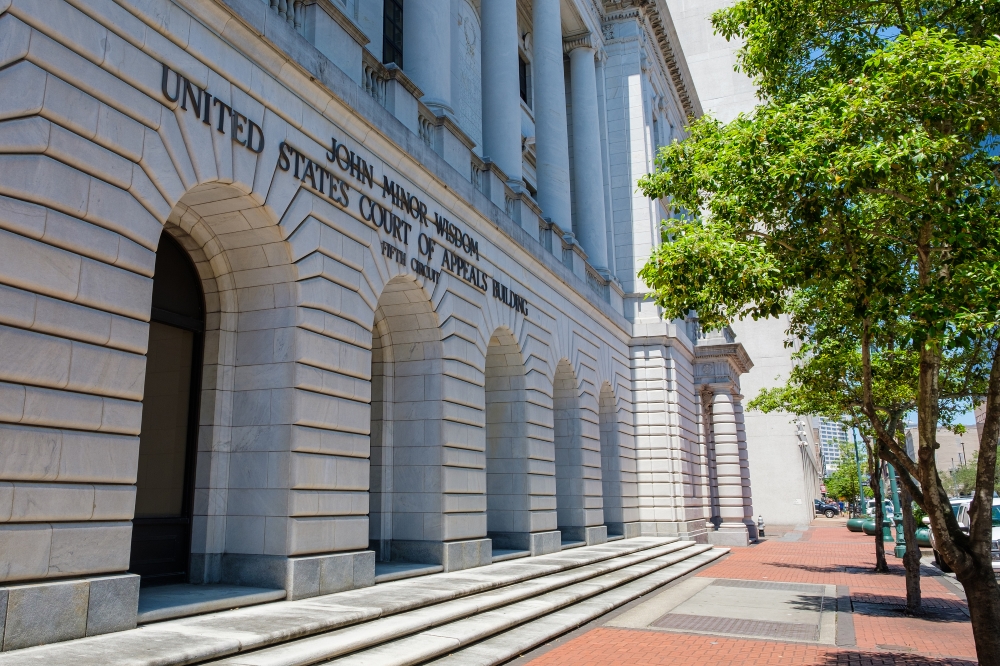For the past year, veteran court watchers have been eagerly waiting for the other shoe to drop with the second en banc opinion in Daves v. Dallas County pending before the United States Court of Appeals for the Fifth Circuit. In January 2022, the court issued the first en banc opinion, Daves I, which held that both county court judges and district court judges were state actors who could not be sued in federal court pursuant to 42 USC §l983 (which reversed a ruling to the contrary in ODonnell I) regarding possible federal oversight of ongoing criminal cases including setting bail.
In an unusual move, the Fifth Circuit remanded the case for the trial court to make certain findings, but retained jurisdiction for final disposition of the case en banc. On March 31, the court issued its second and final en banc decision in Daves II. The ruling was stunning while entirely logical, with its impact certain to reverberate for years.
To have a better understanding of the importance of the opinion, some background is helpful. In Daves I, the court of appeals remanded the case back to the trial court for the limited purpose of conducting such proceedings as appropriate to make findings and conclusions on the two remaining issues regarding abstention and mootness. The Fifth Circuit retained jurisdiction over the appeal for final disposition en banc, which means it was voted on by the entire court of appeals consisting of 15 or 16 judges.
With the Court of Appeals ruling in Daves II, there is no question as to its firm and declarative tone, as captured in its opening sentence:
“In a second round of en banc review, we conclude that this case, whose aim was to revise by federal decree the Texas state court procedures for felony and misdemeanor pretrial bail, should never have been brought in federal court.”
On the issue of abstention, eight of the 15 judges made up the majority opinion. The opinion argued that it was imperative that the court reconsider abstention to counteract “judicial amnesia” regarding proper case law analysis. The Fifth Circuit noted that there were a number of cases before it, along with other circuits, asking federal courts to judicially order and enforce state court bail reforms. Additionally, citing ODonnell I, it noted that several federal courts had previously rejected abstention “without exhaustive consideration.”
The court of appeals noted that if abstention was mandated, considerable time and money, as well as judicial resources, would be saved on litigation in federal court. The court also argued that misinterpretations of abstention had caused friction between state criminal courts as a result of federal courts micromanaging bail changes.
To support its analysis, the Fifth Circuit principally relied upon the U.S. Supreme Court opinion in O’Shea v. Littleton, 414 U.S. 488, 94 S. Ct. 669 (1974), which the court argued was closely on point. In O’Shea, the Supreme Court held that a group of plaintiffs had no standing to challenge various Cairo, Illinois criminal practices, including the imposition of excessive bail, which the plaintiffs alleged to be racially discriminatory and discriminatory against indigents. Id. at 498, 94 S. Ct. at 677.
The Supreme Court held alternatively that even if some plaintiffs had standing, the principles of Younger v. Harris, 401 US 37 (1971), mandated that no federal equitable relief could be granted in the absence of irreparable injury “both great and immediate.” Also, in O’Shea, the Supreme Court coupled its concerns about interfering with a state criminal proceeding with its description of various adequate legal remedies that were available to the plaintiff class members in the course of criminal defense. This included direct and postconviction collateral review, disciplinary proceedings against judges and federal habeas relief.
Accordingly, the Fifth Circuit reconsidered its precedent on the issue in its previous ruling in ODonnell I. The Younger rule requires federal court abstention when three criteria are met: (1) the federal proceeding would interfere with an “ongoing state judicial proceeding”; (2) the state has an important interest in regulating the subject matter of the claim; and (3) the plaintiff has “an adequate opportunity in the state proceedings to raise constitutional challenges.”
In its review of the first element, ODonnell I had held that supervisory bail injunctions would not implicate comity. However, the Fifth Circuit disagreed and pointed out that the injunction issued in ODonnell I expressly mandated a periodic reporting scheme and monitor that the Supreme Court precluded in O’Shea. The court also noted that even before the en banc decision in Daves I, it had determined it necessary to disapprove of several of the overreaching injunctive provisions in ODonnell I. It also argued that this type of litigation had the potential to create mischief because it would allow pretrial detainees to claim that the state court did not comply with the federal court’s opinion, even if it was a case of interpretation.
As to the second element in determining abstention, the court of appeals noted that the plaintiffs in ODonnell I conceded the element. On the third element, the court spent considerable time disparaging the original analysis of the trial court in ODonnell I. The Fifth Circuit held that ODonnell I misperceived the context and limited implications of the 1975 case of Gerstein v. Pugh, 420 U.S. 103 (1975), upon which it relied. It also concluded that the trial court “strayed far off the mark” in asserting Younger abstention is avoidable if state court review procedures are not “properly” addressing certain constitutional claims.
In addressing how the ODonnell I court went wrong on the third prong of abstention, the Fifth Circuit noted the response offered by the Supreme Court in Middlesex County Ethics Committee: “Minimal respect for the state processes, of course, precludes any presumption that the state courts will not safeguard federal constitutional rights.” 457 U.S. at 431, 102 S. Ct. at 2521. The court concluded that this presumption was violated in ODonnell I’s rejection that Texas had provided adequate state remedies.
The court of appeals also summarized state court remedies available in Texas in the setting of bail. It noted that state law expressly provides mechanisms for challenging excessive bail:
- A person may move for a bond reduction;
- The individual can ask for reconsideration of bail in light of the states’ written witness statements, as well as all other evidence available;
- Persons involved in felony cases have a right to ask for an examining trial before indictment to determine the amount and sufficiency of bail;
- There is no procedural bar for filing a motion for reconsideration of bail;
- Petition for habeas corpus is available; and
- (See footnote 27 of the opinion).
The Fifth Circuit concluded its analysis regarding abstention with the following:
“An order for cash bail accompanies a judicial determination of probable cause, which means that the defendant has presumably violated the criminal law. At that point, the question becomes how to balance the interests of the defendant in being released pending trial against society’s need to enforce the law, protect innocent citizens, and secure attendance at court proceedings. See, e.g., Tex. Code Crim. P. art. 17.15(a). Certainly, any kind of error in assessing excessive bail is lamentable, whether it pertains to the defendant’s criminal history, the nature of the instant charge, the protection of potential victims, or his ability to pay cash bail. Even more unfortunate is the plight of a person unconstitutionally convicted who remains incarcerated pending the outcome of appeal or postconviction remedies; yet that is precisely what Younger held despite the ‘untimeliness’ of the state criminal process. The gist of Younger’s test for availability, however, lies in the fact that errors can be rectified according to state law, not that they must be rectified virtually immediately.”
The holding of the abstention issue in ODonnell I was reversed, the court stating that it and the Daves case should not have been litigated in federal court.
The second issue addressed in Daves II involved the question of how the case might be affected due to the passage of Senate Bill 6 by the Texas Legislature. Thirteen of the 15 judges agreed that passage of the bill rendered Daves moot and that it should be dismissed.
The ramifications of the opinion in Daves v. Dallas County could be substantial on several fronts because of the abstention analysis. It may resolve other pending litigation in the Fifth Circuit and could be used to determine other cases around the country. The legal action may also have an immediate impact on counties across Texas that have been on the receiving end of ultimatums from advocates demanding changes lest they face the threat of costly federal lawsuits.
Other cases pending in Texas may also be impacted by the ruling in Daves II, including Booth v. Galveston County, which also addressed pretrial bail procedures and was argued over a year ago after being appealed to the Fifth Circuit. In light of the Daves decision, the case may well be remanded with instructions to the trial court to reconsider its opinion.
In Russell v. Harris County, litigation remains pending against Harris County and Sheriff Ed Gonzalez regarding felony bonds. Judge Lee Rosenthal held a hearing on March 29, setting out plans to move forward with the case on the merits, only to have the Daves II opinion released two days later. In response, Judge Rosenthal held a status conference with the parties to discuss the impact of the opinion on the Russell case. She subsequently issued a schedule for all parties to file briefings by early May to address abstention and mootness and whether the Russell case was distinguishable from Daves – and to what extent abstention could be waived. It is unclear whether the additional briefing was at the suggestion of the parties or Judge Rosenthal.
What remains to be seen is whether the plaintiffs in Daves II may seek review by the Supreme Court. The Fifth Circuit recognized that its analysis on the issue of abstention differed from the 11th Circuit’s analyses in Walker v. City of Calhoun and Schultz v. Alabama. A difference of opinion between circuit courts is grounds for a party to file a petition for certiorari. It is open to conjecture whether this is exactly what the court is hoping will happen in an effort to possibly shut the door on this type of litigation nationwide.
The Fifth Circuit has demonstrated that it was not comfortable with the federal court’s interfering with ongoing state criminal court proceedings. In holding that Daves and ODonnell I should have never been filed in federal court, it has confirmed that Harris County has wasted over $100 million in public money implementing edicts based on an opinion that should have never been issued. The court of appeals has made it abundantly clear that it will no longer allow the weaponization of the federal courts by advocates seeking to judicially impose pretrial bail reform in Texas.










